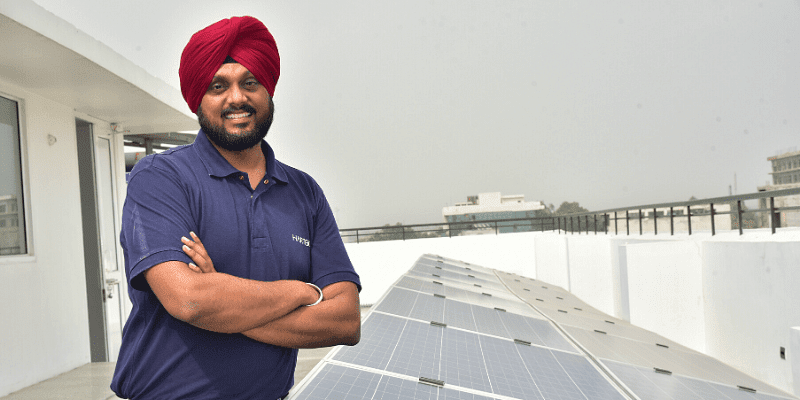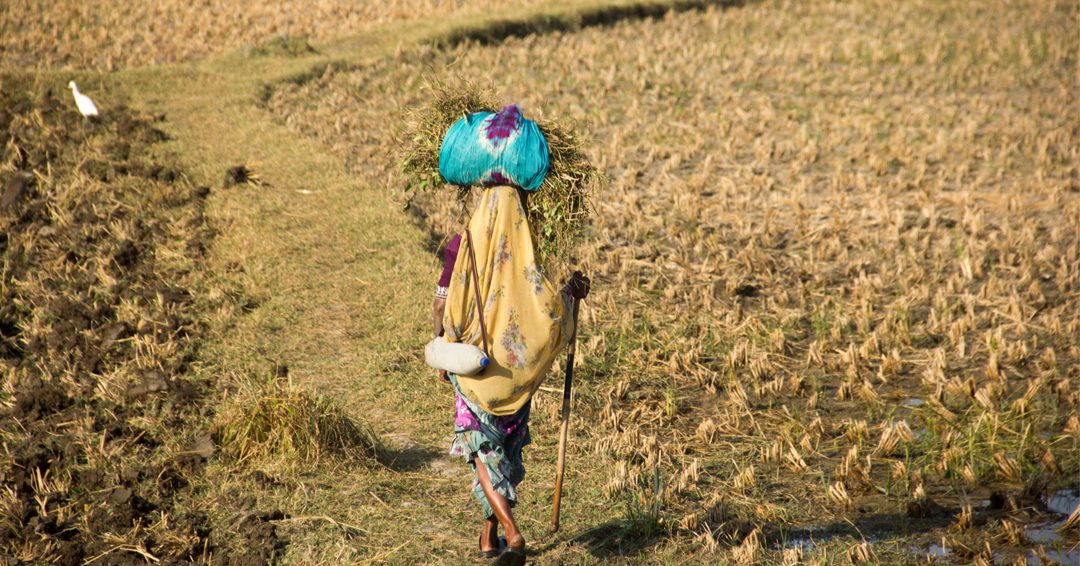(September 11, 2021) ‘Finding inspiration in the unlikeliest of places – is the one phrase that best suits Simarpreet Singh’s journey, who went from being an electrical Indian engineer to a ‘renewable energy’ entrepreneur. Singh’s inspiration stemmed during the evaluation of a routine project installation in Andhra Pradesh’s Anantapur district, where he found that several homes had no access to electricity. To help them tide over the power crisis, Singh wanted to build a basic yet sustainable power infrastructure; and what better than solar energy to do so.
After a year of considerable research on how to promote as well as integrate solar power into a typical Indian home, Singh established Hartek Solar – an offshoot of his family business Hartek Group – in 2017. With this, Singh embarked to transform lives and households that had thus far been bereft of electricity. He took the idea a step further and developed plug-and-play type solar installations; these can be retrofitted based on the requirements and space on rooftops.
Truly humbled. Thank you @ForbesAsia for finding me worthy enough to be named in the prestigious Forbes 30 under 30 asia. Shall continue to work even harder and truly build a sustainable ecosystem for the future generations #forbesunder30 #forbesU30asiahttps://t.co/PTU1mMmR30
— Simarpreet Singh (@simarpreeths) April 4, 2019
“I came to realize my fundamental purpose was to pass on the information to the next generation and create a better and a sustainable world for our future generations, shall try to contribute my own bit and create a positive impact on the lives we touch,” he said on his YouTube channel.
Since its inception, Hartek Solar has earned a place amongst the top 10 solar power installers in the country, with a presence across several states: Punjab, Gujarat, Andhra Pradesh, Haryana, Madhya Pradesh, and Rajasthan. As an Indian Engineer, his work which has transformed several lives led him to be included in the Forbes 30 under 30 list. He was also awarded Entrepreneur of the Year – 2018 by SPJIMR awards, Top 100 most Powerful and influential Sikhs in the World, 40 under 40 business leaders, and Top 100 most Powerful solar business leaders by Solar Quarter magazine.
A typical 90s’ kid searching for a purpose

Simarpreet Singh with Raghuram Rajan
Like any other 90s kid, Singh too wanted to be a cricketer, but fate had other plans. A serious injury to his nose prompted him to deviate from the sport he was so passionate about. Hailing from a family of electrical engineers, Singh too went on to graduate in electrical engineering from Chitkara University in 2012. He also did his MBA from SP Jain Institute of Management & Research in Mumbai and holds two executive education degrees from London Business School and Harvard Business School.
Talking about his family members’ electrical engineering qualifications, Singh, an Indian Engineer, had once in jest said, “Here, we first become engineers or doctors, and then we decide what to do in life.”
The turning point
Things took for an interesting turn when Singh opted to skip the college placements and instead join the family business. However, his father placed three conditions before him during a long after-dinner walk:
- Get an on-campus placement from the college.
- Undergo a year of training in a different company.
- No special privileges for joining family business and a starting salary less than 20%of what was being offered at campus placements.
Spurred by these, Singh got a job with Areva (now Schneider Electric), after being rejected by several reputed firms. Here Singh worked as a shop floor manager, dabbling in the roles of a fitter and technician in a company that manufactures power equipment – this enabled him to better understand industry nuances. He also used his time to learn more about the power sector and the upcoming opportunities. He realized that he truly wanted to solve the existing lacunae in the sector.
It was only after Singh successfully fulfilled the conditions set by his father, was he inducted into the Hartek Group’s sales and business development division.
India and its renewable energy market
According to the Indian Renewable Energy Industry Report (June 2021), the country’s renewable energy sector is the fourth most attractive market in the world and it was ranked fifth, fourth, and fifth in wind, installed renewable power capacity and solar power respectively.
In a tropical country like India, Solar Power is often considered as a panacea to electricity-related woes. However, some misconceptions about the technology have confined it to larger corporations and industries. Singh was set to change that. Along with his team, he developed rooftop solar kits that require minimal maintenance and would be easy to monitor.
When he launched Hartek Solar, Singh got seed investment from Hartek Group’s internal accruals and eventually got in touch with angel investors and strategic partners to raise more funds. Hartek’s solar kits are compact and easy to install and can be customized according to the rooftop space available. At a time when the planet is grappling with the effects of climate change and harmful emissions, Singh is working towards providing people with clean energy solutions to offset their carbon footprint.



